تیتر سه گزارش
-

$3.5bn Invested in Tehran Refinery Upgrading
SHANA (Tehran) - Tehran’s oil refinery is among the oldest and leading oil refining facilities in Iran. It is instrumental in producing vital fuels like gasoline, gasoil and jet fuel. With a refining capacity of 250,000 b/d of crude oil and enjoying a strategic location near Tehran, the facility has a major share in national energy supply. Upgrading the quality of petroleum products has been a priority of the Ministry of Petroleum under the 14th administration. That would require upgrading the refinery.
-
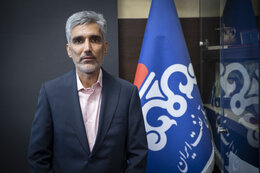
Upstream Oil Investment Strategy to Change
SHANA (Tehran) - Iran’s petroleum industry experienced a turning point in May 2025. National Iranian Oil Co. (NIOC) introduced more than 200 investment opportunities worth $137 billion, signaling its inclination for partnership with the private sector and foreign investors. Amir Moqiseh, NIOC director of investment and business, tells “Iran Petroleum” that Iran’s new oil strategy is translated into sweetening terms of oil contracts, hedging investment risks, ending restrictions enshrined in old contracts and full support for the private sector.
-
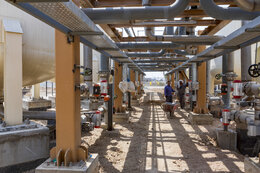
Tehran Refinery to Build 500MW Power Plant
SHANA (Tehran) - The Tehran oil refinery is relying on domestic capacities to implement transformative projects to upgrade the quality of products, manage resources and step into renewable energies. Known as one of the oldest and now most important oil treatment facilities in Iran, the Tehran oil refinery has made multi-billion-euro investment in projects to upgrade the quality of gasoline, sweeten fuel oil, treat urban wastewater and build solar power plants as part of its plans for renovation and sustainable development.
-
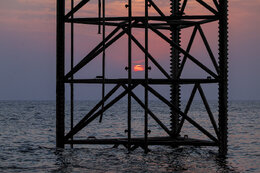
Energy, Iran-Russia Main Bridge
SHANA (Tehran) - Russia and Iran hold the world’s first and second-largest gas reserves. That takes up added significance when one takes into consideration Russia’s neighboring Iran. Iran and Russia together hold more than 37% of global gas reserves. Russia sits atop 35 tcm of gas, i.e., 19% of the world’s total, and Iran holds 33 tcm of gas, i.e., 17.1% of the world’s total.
-
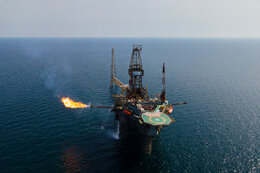
Infill Project, South Pars Second Pulse
SHANA (Tehran) - The giant South Pars gas field supplies 70% of Iran’s gas needs. After two decades of incessant supply, it is today struggling with the challenge of pressure fall-off. Pars Oil & Gas Company (POGC) is in charge of development of the offshore reservoir. It is envisaging drilling 35 infill wells with a view to countering natural fall-off in production, enhancing the rate of recovery and stabilizing gas supply. That would finally lift the South Pars output by 36 mcm/d. While implementation of phase development projects at South Pars almost over, it is now presented as the strategic option for managing pressure fall-off and countering gas imbalance.
-
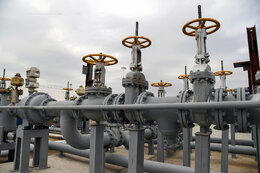
Iran Oil Industry Unfazed by War
SHANA (Tehran) – Nearly four decades after the end of the imposed war on Iran, the Zionist regime, which has occupied Palestine, launched military strikes on Tehran and some other cities as well as Iran’s oil facilities in a flagrant violation of international law and national sovereignty of the Islamic Republic of Iran.
-
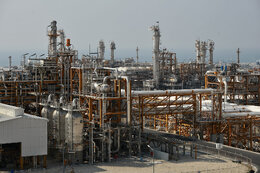
Aborted Drone Attack on South Pars
SHANA (Tehran) – On 14 June 2025, a micro-drone flown by the Zionist regime struck the onshore refinery of Phase 14 of the massive South Pars gas field, causing big blasts at the facility and fire in one of the four units. The fire was followed by a temporary suspension of gas supply from SP14. However, within 10 days, gas production resumed.
-
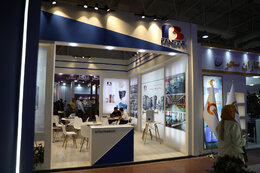
Oil Show Stimulates Optimism for Investment in Iran
SHANA (Tehran) - Amid ongoing diplomatic talks between Iran and the United States that are largely expected to end in sanctions lift, foreign companies are exploring opportunities for investment in Iran’s petroleum industry.
-
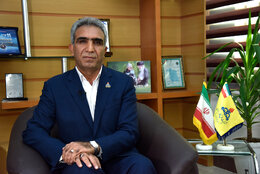
Parsian Refinery Processed 17 bcm of Gas in 1 Year
SHANA (Tehran) – The Parsian Gas Refinery is a sophisticated natural gas processing facility in Iran. Located 9 km from the city of Mohr in Fars Province in southern Iran, it came online in two phases from 2002 to 2006.
-
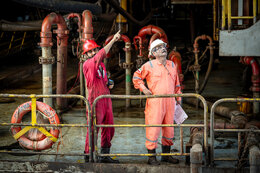
ICOFC Offers $13.5bn Investment Opportunities
SHANA (Tehran) – The director of investment and development at Iranian Central Oil Fields Company (ICOFC), Shirin Mohajer, has announced 25 investment packages worth $13.5 billion in oil and gas projects.
-
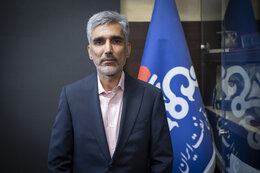
IPC Deals Rate of Return at 20%
SHANA (Tehran) – The National Iranian Oil Company (NIOC), in conjunction with implementing new economic policies to facilitate the awarding and execution of upstream oil and gas agreements, has recently unveiled 200 investment opportunities.
-

Iran Joint Oil & Gas Fields Decided
SHANA (Tehran) - Iran shares at least 28 oil and gas fields with neighboring countries. They include 18 oil fields, 4 gas fields, and 6 oil/gas fields. Rarely is there a country in the world with so many joint reservoirs. Iran shares 12 fields with Iraq, 7 with the United Arab Emirates, 2 with Qatar, 2 with Oman, 1 with Kuwait, and 1 with Turkmenistan.
-
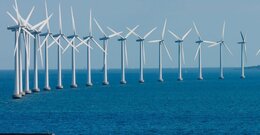
Renewables Growing Share of World Energy Mix
SHANA (Tehran) - Renewable energies have seen their share of the global energy mix growing due to the exhaustible nature of fossil fuels and GHG emissions on the one hand, and their positive impact on climate changes, energy independence, economic opportunities, environmental advantages, and access to energy and equality on the other.
-

China to Let US Down over Iran Oil Ban
SHANA (Tehran) - US President Donald Trump has reiterated his determination to squeeze Iranian oil production to zero. But Iranian Minister of Petroleum Mohsen Paknejad has said the Americans would never see their dream come true.
-
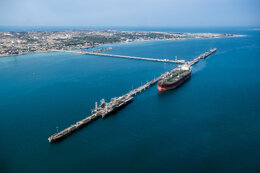
Historic Chance for Iran to Enter European Energy Market
SHANA (Tehran) - Amid US President Donald Trump’s threats to squeeze Iranian oil exports down to zero while increasing tariffs for many countries, seasoned Iranian diplomat Ramin Mehmanparast says Iran is facing a historic opportunity to benefit from the ongoing tariff war between the United States and the European Union (EU). In an interview with” Iran Petroleum”, he stated that Iran can meet the EU’s commodity needs via the North-South corridor.
-

Nowruz, Heritage of Ancient Iranians
SHANA (Tehran) - Nowruz marks the first day of the solar calendar year, falling on March 20 or 21, depending on whether the preceding year was a leap year. It is one of the most ancient festivities of Iranians, who believed that Nowruz determined human destiny during the New Year. For Iranians, Nowruz has been synonymous with hope.
-
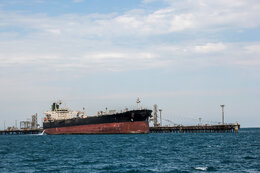
46 Years of Sanctions
Iran Oil Industry Review; 1979-Present
SHANA (Tehran) - The Iranian calendar year is coming to an end, while the Iranian petroleum industry has just marked its 46th year following the Islamic Revolution.
-
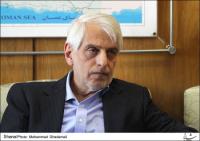
Europe, Potential Market for Iran Petchems
SHANA (Tehran) –Iran’s former deputy minister of petroleum for international affairs and trading, Ali Majedi, has said Iran could find good European buyers for its petroleum and petrochemical products.
-
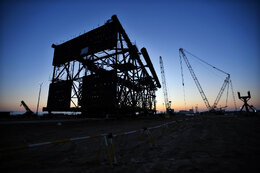
Jacket Loaded for Belal Field Platform
SHANA (Tehran) – The jacket for the platform of the development of the Belal gas field was recently loaded on Jetty No. 3 of Iran Marine Industrial Company (SADRA) in Bushehr to be finally installed on the reservoir block of this project at the Iran-Qatar border in the Persian Gulf.
-

WRFM to Help Prevent Oil Output Fall-Off
SHANA (Tehran) – Artificial Intelligence (AI) is being widely used in the petroleum industry mainly due to the complicated nature and high costs of the industry, particularly in the processes of exploration, production, and operation.
-
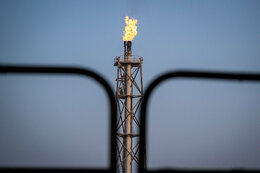
$17b Investment in SP Compression Projects
SHANA (Tehran) – The South Pars gas field, jointly owned by Iran and Qatar, holds 8% of global gas reserves and about half of Iran’s gas deposits.
-
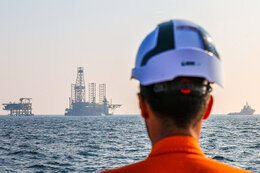
65 oil, gas fields discovered in 45 years
SHANA (Tehran) - Iran sits atop the world’s largest oil and gas reserves combined, amounting to 1,200 billion barrels of oil equivalent (boe).
-
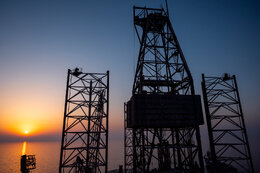
Oil 2024, Quick Review
SHANA (Tehran) – The world oil market did not experience much volatility in 2024. North Sea Brent traded between $83 and $85 a barrel in the 1H2024, which was weakened to even $71 a barrel during the third and fourth quarters due to lower demand.
-
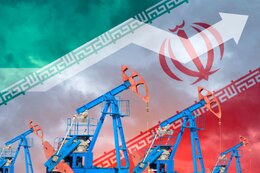
Iran’s oil sector nine-month growth surges 292%
SHANA (Tehran) – Iran’s oil sector achieved strong growth in the first nine months of the current Iranian calendar year (starting March 21, 2023), registering a 292 percent rise year-on-year.
-
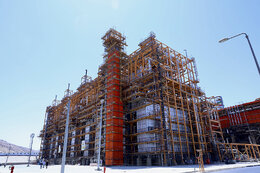
Iran petchem output capacity set to hit 110 mt/y
Iran’s petrochemical industry is a key non-oil revenue generator. Despite oil sanctions, Iranian petrochemical manufacturers have managed to find new markets and have invested in the downstream sector to earn Iran hard currency revenue. Iran’s petrochemical industry production capacity stands at 92 million tonnes a year (mt/y). So far, $85 billion have been invested in this industry. The National Petrochemical Company (NPC) plans to invest another $15 billion within two years to bring the production capacity to 110 mt/y. Hassan Abbaszadeh, NPC’s director of planning and development, told Iran Petroleum the country's petrochemical production capacity would reach 200 mt/y by the end of the 8th National Economic Development Plan.
-
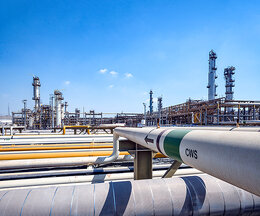
Quality upgrading at 9 refineries
Upgrading the quality of refined products has always been a key issue with treatment facilities. Currently, with about $8.72 billion investment, 13 quality upgrade projects are underway at 9 refineries, some of which will become operational by 20 March 2024. These projects are not limited to upgrading the quality of fuel produced at refineries; rather, they would include a variety of projects including reduction of heavy products’ output and launching a coke production unit at refineries. These projects have been highlighted in the 7th National Economic Development Plan.
-
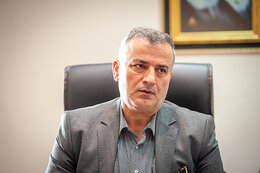
CIS potential market for Iran catalysts
Iran’s petrochemical catalyst export has grown significantly over the past two years. Petrochemical Research and Technology Company (PRTC), currently accounting for 30% of Iran’s petroleum industry catalyst, has announced that the technical know-how for 97% of the catalyst is now homegrown. Majid Daftari, the CEO of PRTC, tells “Iran Petroleum” that Iran would be able to export 1,000 tonnes of catalysts a year, noting that CIS and South American nations would be among the major buyers.
-

Planning to capture 2 bcf of flare gas
The Iranian Ministry of Petroleum has extensive plans for associated petroleum gas (APG) gathering. Minister of Petroleum Javad Owji has said under the 13th administration, flare gas gathering had increased from 2.3 mcm/d to 11.5 mcm/d, which would reach 18 mcm/d by next March. The ministry’s plan for gathering 2 bcf of flare gas would be carried out under five long-term plans.
-
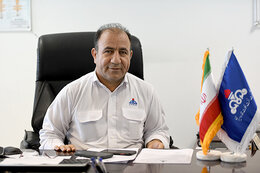
Drilling rigs repaired on Kish Island
Kish Island is a 91.5-square-kilometer island in Bandar Lengeh County, Hormozgan Province, off the southern coast of Iran in the Persian Gulf. It is 87 km from Siri Island and 225 km from Qeshm Island. Iranian Offshore Oil Company (IOOC) is in charge of oil and gas operations on Kish Island. Shahsavar Arghash, head of the Kish division of IOOC, tells “Iran Petroleum” that IOOC is for the first time repairing a drilling rig. He expressed hope that Alvand Rig would be ready in two years to allow for an output hike from the Siri oil field. The following is the full text of the interview he gave to Iran Petroleum.
-
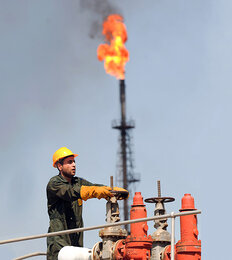
NISOC PGC up 250 tb/d
The studies conducted over the past two years at National Iranian South Oil Company (NISOC), new “planned guide capacity” (PGC) has been determined for the six reservoirs of Ahvaz Bangestan, Mansouri Bangestan, Ab Teimour, Golkhari, Balaroud, and Mansourabad Bangestan, promising a total of 250 tb/d. This amount is 7% of NISOC’s current PGC. A 250 tb/d increase in production from NISOC-run fields would bring the company’s potential output from the current 3.4 mb/d to 3.65 mb/d, which is a breakthrough for Iran’s petroleum industry. That would yield an approximate $7 billion in revenue.